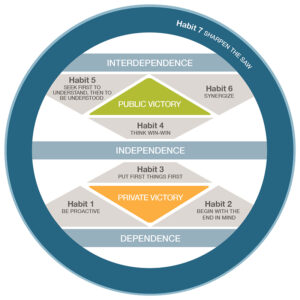One perspective on the definition of leadership, is that it comes down to how you behave when you’re in the middle of a crisis. Do you keep your head, your perspective and the courage of your convictions whilst all around you people are losing theirs? Or do you allow yourself to become part of the problem? Just how good are your business crisis survival skills?
Flight, Fight or Freeze
If you stop and think about it, you’ll be able to think of situations where you experienced one of these survival instincts or threat responses. They’re very familiar to us.
Clearly, having automated responses helps – and we need a variety of them to cope with the variety of threats.
If our only threat response was ‘Freeze’ we wouldn’t get on too well with forest fires or volcanoes. And imagine how the ‘Fight’ response would work out for you if you encountered a grizzly bear. Tricky.
Of course, we live in an age when these things are unlikely to happen, but our brains are still hard-wired to look for threats. To feel threatened.

But Don’t Panic!
One thing’s for sure, the number one mistake you can make is to panic. That only works if the the solution to the threat is both very obvious and very simple.
That’s because the threat response area of your brain and the part that is creative and innovative are entirely separate. And they operate on an ‘either / or basis’.*
What that means is if the threat is deemed to be significant enough, your brain will actively shut down the part that is creative and innovative. Essentially, its saying “you don’t have time to be clever right now – run (or fight / freeze)!”.
* You can read more about this and Positive Intelligence here.
What are the equivalent of these threat responses for a business owner?
The equivalent for freezing would be procrastination or feeling overwhelmed. If I threw 1 tennis ball to you, you’d catch it. If I threw 2, one after the other you’d likely catch both. If I threw 10, it’d be funny. Feeling overwhelmed or out of one’s depth leads to a steep drop-off in the quality of decision making.
We see the equivalent to the Flight urge with people who decide it’s all too much and it’s time to throw in the towel. The game is up. The goose is cooked. I’ve known many business owners hit this point only to take a more considered stance a week later. That’s not too harmful if you’re a one-man band (with the caveat that businesses don’t tend to reward start / stop approaches) but what about if you have employees relying on you?
Fight is the same although hopefully not physically. Losing your rag is rarely the route to a great solution in any situation be that road rage, an unpaid invoice or getting let down by a member of your team.
Your ability to choose how you respond
There’s a strong argument that our most valuable ability is our ability to choose how we react to any situation. To choose our attitude and to choose our response.
And it’s a lot easier if we don’t succumb to panic or one of our automated threat response.
There are 3 processes I use to do this which collectively have saved me from more mistakes than I can count – and maybe they’ll be good for you too.
Process 1: Get some much-needed perspective
I’m frequently told by clients how therapeutic it is for them to simply talk through their problems.
Partially, this speaks to the ‘loneliness’ that many business owners feel. You can’t 9or shouldn’t) unload on your employees and you don’t want to bring your problems home to the family.
But it’s also a solid psychological device. The process of ‘externalising’ a problem by saying it out loud, helps shift the activity from threat-response to a creative response. It takes the person from feeling reactionary and like a victim of circumstance to feeling proactive and taking ownership of the situation.
Talking your problems through can really help – especially if you’re talking to someone who’s trained to listen.
But you don’t need to have access to that. Writing it down achieves much the same thing.
So the next time you have a big problem, simply write it down and see what happens.
Process 2: Fix it or fix how you feel about it
This is a 4-step process that will help you decide how to approach a challenging situation.
Step 1: What direct action can I take to either fix this or at least to make this better? (Starting a question with the word ‘What …’ is far more likely to prompt a positive answer than starting it with ‘Is there … ’.)
This really does help cut through the chaff and white noise. It helps redirect your focus from threat response to the variety of choices you always have.
Step 2: If there are actions you can take, is it worth the time / money / effort involved? For example, if the only way to keep that employee you rely on was a disproportionate pay rise, you may well conclude it would be a better option to recruit afresh.
Step 3: If not, can I change the way I feel about it? Just because an experience knocked you flat doesn’t mean it is without positives. Maybe it was there to demonstrate a pattern in your approach that is holding you back. Maybe it was to teach you humility, or gratitude. To slow down – or speed up.
Step 4: If not, chuck it in the ‘F*#k It’ bucket. Not everything has to happens for a reason. Life is great but sometimes crap things happen out of nowhere and with no redeeming features. It can’t be avoided. It can’t be fixed. There is no learning dividend. It’s just one of those things you have to take on the chin and move on – and that’s OK.
Process 3: Borrow habits from the best
The 3rd process I’ve found incredibly useful is the first 3 of The 7 Habits of Highly Effective People by Stephen R Covey. Tellingly these deal with the transition from a state of being ‘Dependence’ to ‘Independence’.
Habit 1: Be Proactive
There are always things that are beyond your control. If we focus on these and these alone, life and business will seem pretty bleak.
There is always something you can do. Action you can take. It may fix the problem in front of you or it may just stop you fretting about it. Either way you’ll be better off than having done nothing.
Adopting a default mindset of looking for the direct action you can take will do wonders for your mojo over the long term.

With thanks to https://www.leaderinme.org
Habit 2: Begin with the End in Mind
I must use this habit on almost a daily basis and it has saved me so much stress over the years.
In any given situation you simply ask yourself “what’s my ideal end result from here?”
I find it particularly useful when dealing with people problems. Quite often my inner chimp wants to get involved – especially if I feel I’ve been slighted or taken advantage of. This is just my ‘fight’ threat response going onto red alert.
And if I ever succumb to that, it invariably makes the situation worse.
There are two aspects to this. Firstly, threatened / scared / angry people are rarely produce or innovate more or indeed make fewer mistakes. So your chimp response won’t the reaction you want.
Secondly, beginning with the end in mind lets you look past the immediate. It gives you the perspective of looking back to see how you will feel about letting your chimp off the lead. Usually the answer is embarrassed or in some way regretful.
Habit 3 Put First Things First
If the list of direct actions you could take is not solitary and simple it still stands a chance of becoming slightly overwhelming in it’s own right.
The odds of being productive go through the roof if we have a limited number of tasks to focus on.
And it keeps going up if we believe we are capable of success. As Henry Ford said “Whether you think you can or think you can’t – you’re right.”
So, pick one of the things from your list – and all other things being equal, pick the simplest / easiest – and get it done.
This way, you’ll be tackling the next thing with more self-belief, more knowledge and more enthusiasm.
The golden rule to remember in any crisis
The main threat responses maybe (by design) compelling, but they are rarely if ever effective or productive in a business setting.
Whether your trigger is to Flee, Fight or to Freeze, the consequences won’t be great.
Instead, remember the golden rule: always look to displace Anxiety with Activity.
Very often the anxiety is there for a reason. It’s telling you something is amiss – almost like a call to arms.
The more you analyse what’s at the root of it – and take decisive action to remedy it – the better you’ll sleep.





